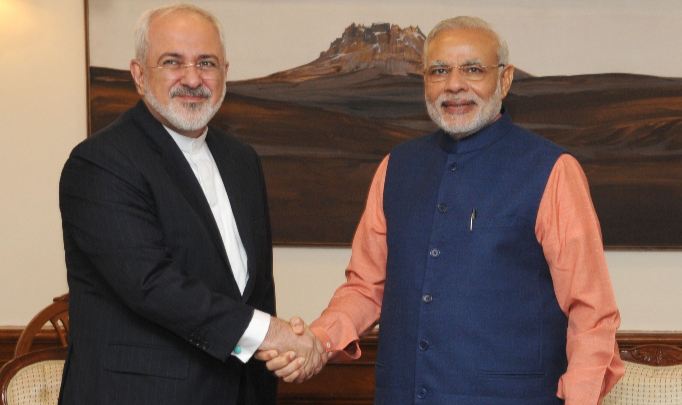by Fatemeh Aman
During Prime Minister Narendra Modi’s visit to Saudi Arabia that began on April 3, India and Saudi Arabia signed agreements on financial intelligence-sharing, terrorism financing, and trade and investment. According to the joint statement, the two countries “call on all states to reject the use of terrorism against other countries; dismantle terrorism infrastructures where they happen to exist and to cut off any kind of support and financing to the terrorists operating and perpetrating terrorism from their territories against other states; and bring perpetrators of acts of terrorism to justice.”
A similar agreement on economic and security cooperation was signed in the United Arab Emirates in August last year. In regards to terrorism, the agreement condemned “efforts, including by states, to use religion to justify, support and sponsor terrorism against other countries.”
Each side interpreted the statement in Riyadh differently. India likely understood the agreement’s language about “sponsoring terrorism” to refer to Pakistan, while a Saudi official expressed satisfaction that India understood the Kingdom’s position “on terrorism emanating out of Iran.”
India accuses Pakistan of supporting separatists and violence in the Himalayan region. Saudi Arabia, meanwhile, considers Iran to be behind the sectarian tension and violence in the Kingdom.
India’s Balancing Act
But India has also been careful to hedge its bets. A trip by Indian Foreign Minister Sushma Swaraj to Iran on April 16 could be interpreted as an effort to both strengthen ties with Iran and balance Modi’s trip to Riyadh.
So far India has successfully maintained an active Middle East presence. India’s foreign minister has traveled to the Persian Gulf states, Israel, and the Palestinian territories, and Modi met with Iranian President Hassan Rouhani on July 8, 2015 on the sidelines of the Brazil, Russia, India, China, South Africa (BRICS) and Shanghai Cooperation Organization (SCO) summits. India has also hosted high-ranking officials from countries such as Iran, Syria, Qatar, and Israel.
There are 7.3 million non-resident Indians in the Middle East, 2.8 million of them working in Saudi Arabia and remitting over $36 billion to India in 2015. Saudi Arabia is India’s principal oil supplier.
Sectarian strife is one of India’s major concerns requiring engagement with the Saudis. With a large Muslim population—nearly 140 million—India is taking measures to monitor and control the increase of Wahhabism in the country and possible Saudi funding of Wahhabi sects.
Iran and India Expand Cooperation
In March of this year, the cabinet of Prime Minister Modi gave its approval for India to accept to the Ashgabat Agreement, which facilitates the transportation of goods between Central Asia and the Persian Gulf. India is working to participate in the International North South Transport Corridor (INSTC) which is the route for moving freight between India, Russia, Iran, Europe, and Central Asia. India’s investment at the Chabahar port in Iran—potentially amounting to $20 billion—is another expanding arena for cooperation. In May 2014, with the economic sanctions eased, Iran signed a memorandum of understanding with India on developing the long-delayed Chabahar port project. Later, India decided to increase the original investment from $85 million to $150 million. A new deal, which includes a liquefied natural gas plant and a gas cracker, along with the construction of a direct 1400-kilometer undersea gas pipeline from Chabahar to the Gujarat coast, will increase India’s investment to $20 billion.
Both countries also need each other to ensure a stabilizing impact in Afghanistan through investment and other means.
Continuing tensions between Iran and Saudi Arabia and the subsequent deteriorating security situation challenge India’s interests. Saudi-Iran tension and its impact in Yemen have forced India to evacuate thousands of its citizens from Yemen. Therefore, it is in India’s interest to maintain an effective balance between the two countries, and both countries seem to understand that.
Both India and Pakistan have worked hard to keep a balanced relationship with the Saudis and other Arab states on one side, and Iran on the other side. Dissatisfaction with Pakistan for declining to join the coalition to intervene in Yemen has led to some harsh exchanges between Pakistani and Arab officials including a warning to Pakistan that it will pay a “heavy price.” This type of expectation game is a major impediment for improvement of relationships between the regional nations. If improved cooperation between India and Saudi Arabia can be achieved without undermining Saudi-Pakistani relations, it should equally not come for India at the expense of its relationship with Iran. India needs more friends than foes, and that includes Iran.
Photo: Iranian Foreign Minister Javad Zarif with Indian Prime Minister Narendra Modi





